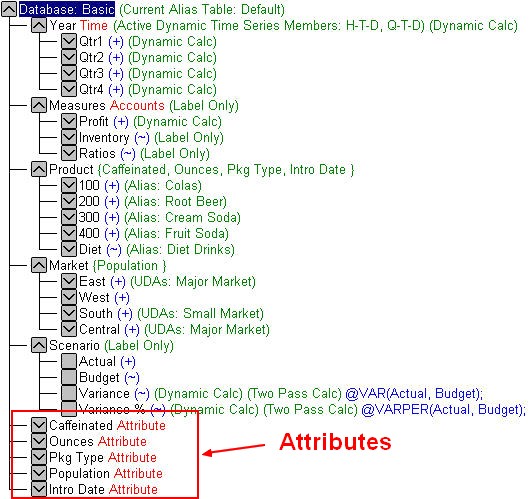About
An attribute dimension is a special type of dimension that is associated with a standard dimensions.
Use attribute dimensions to report and aggregate data based on characteristics of standard dimensions. In the Sample.Basic database, for example, the Product dimension is associated with the Ounces attribute dimension. Members of the Ounces attribute dimension categorize products based on their size in ounces.
Essbase does not allocate storage for attribute dimension member. Instead, it dynamically calculates the members when the user requests data associated with them.
Attribute dimensions are always sparse dimensions. And you can associate attribute dimensions only with sparse standard dimensions
Articles Related
Example
Caffeine
In the figure below, Caffeinated, Intro Date, Ounces, Pkg Type and Population are attribute dimensions.
Through attribute dimensions, you group and analyze members of standard dimensions based on the member attributes (characteristics). For example, you can compare :
- the profitability of noncaffeinated products that are packaged in glass
- to the profitability of noncaffeinated products packaged in cans.
Packaging
For example, the Pkg Type attribute dimension contains a member for each type of packaging, such as bottle or can, that applies to members of the Product dimension.

